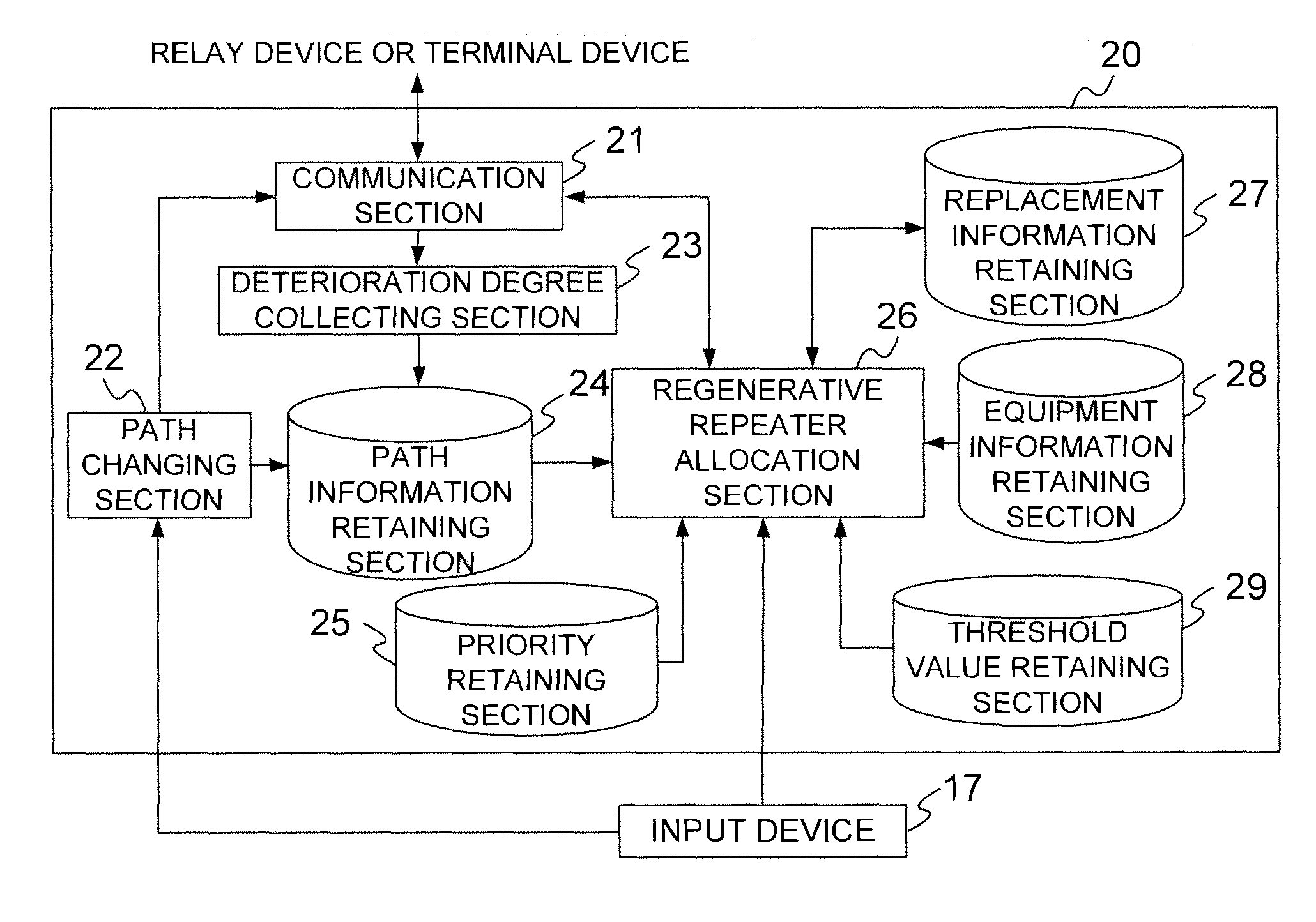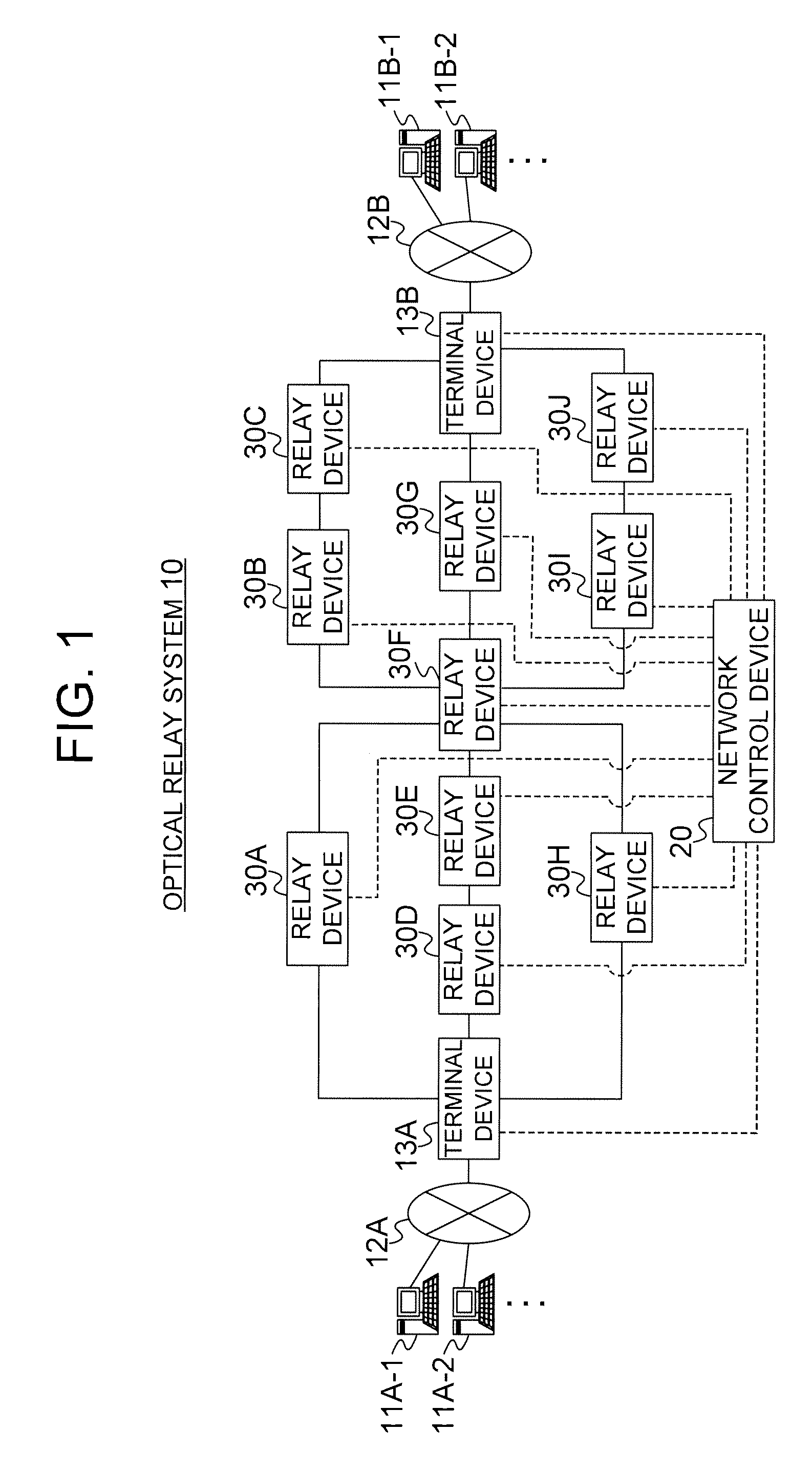Optical relay system and network control device
a relay system and network control technology, applied in the field of optical relay systems, can solve the problems of inability to determine the location of the regenerative repeater in the new path, the quality of the optical signal to deteriorate, and the inability to decode the received signal, so as to achieve the effect of reducing the waste of power consumption of the entire optical relay system and low level
- Summary
- Abstract
- Description
- Claims
- Application Information
AI Technical Summary
Benefits of technology
Problems solved by technology
Method used
Image
Examples
Embodiment Construction
[0053]Hereinafter, an embodiment of the present invention is described with reference to the accompanying drawings.
[0054]FIG. 1 is a system configuration diagram illustrating a configuration of an optical relay system 10 according to the embodiment of the present invention. The optical relay system 10 includes a plurality of terminal devices 13, a plurality of relay devices 30, and a network control device 20 which controls the respective relay devices 30.
[0055]The respective terminal devices 13 are, for example, connected to a plurality of communication devices 11 via access lines 12 such as metal cables. Further, the plurality of relay devices 30 are provided between the terminal devices 13, and optical fiber cables are used for connections between the terminal device 13 and the relay device 30 and between the relay device 30 and the relay device 30. Further, the respective terminal devices 13 and the respective relay devices 30 communicate with the network control device 20 via a...
PUM
 Login to View More
Login to View More Abstract
Description
Claims
Application Information
 Login to View More
Login to View More - R&D
- Intellectual Property
- Life Sciences
- Materials
- Tech Scout
- Unparalleled Data Quality
- Higher Quality Content
- 60% Fewer Hallucinations
Browse by: Latest US Patents, China's latest patents, Technical Efficacy Thesaurus, Application Domain, Technology Topic, Popular Technical Reports.
© 2025 PatSnap. All rights reserved.Legal|Privacy policy|Modern Slavery Act Transparency Statement|Sitemap|About US| Contact US: help@patsnap.com



